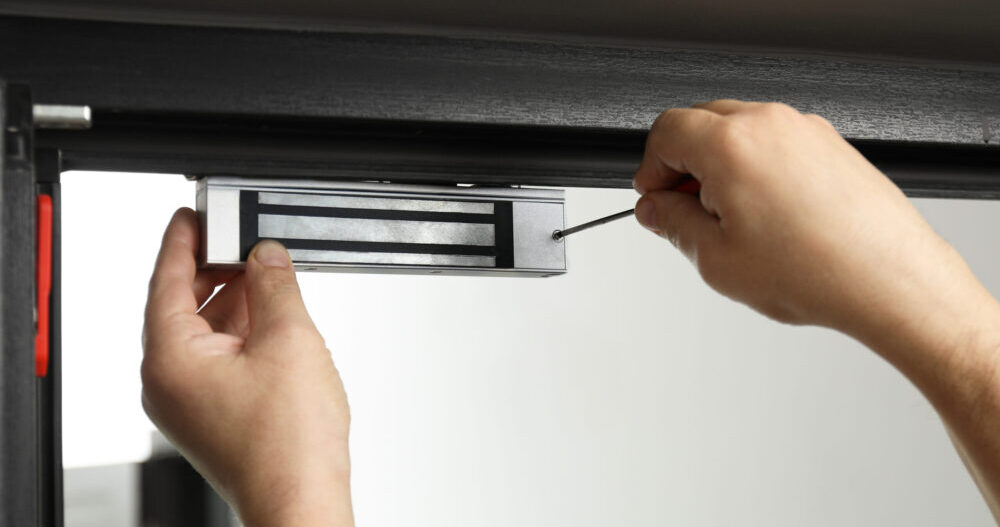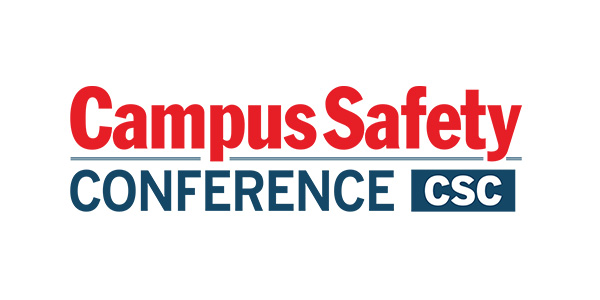Every opening deserves the best security, no matter the challenge or footprint. Electromagnetic locks (maglocks) and specialty locks are engineered to address the toughest applications, including code-compliant delayed egress and hazardous industrial environments.
Maglocks fit nearly any opening, offering durability and reliability while requiring little to no maintenance. They’ve become a trusted solution for entrance control, with options and features for every access level, including high security.
Related Article: Want to Improve Classroom Safety? Don’t Just Focus on the Door
Campuses benefit from engineering refinements and ongoing innovation that simplify installation and streamline projects—like integrated motion sensors (rather than separate components), bracket mounting, and templates for consistent placement. Autosensing dual voltage with microprocessor technology reduces the need for field adjustments, while visible LEDs indicate lock status on the secure side of the door.
The latest maglock technology is highly configurable and ready to satisfy local and national fire and life safety codes. Access delay times can be configured to specific states or municipalities, such as California (30-second exit delay) and Chicago (15-second exit delay).
Today’s smart maglocks can also regulate power at the door with voltage sensing, include monitoring components, and can be integrated to systemwide access control management platforms.
With a comprehensive selection of products, capabilities and configurations, maglocks and specialty locks help expand entrance, perimeter, and interior security—while giving schools, colleges and healthcare facilities new opportunities to add points of protection in demanding and even harsh environments.
Retrofitting Delayed Egress
Standard openings—like single interior or perimeter out-swinging doors—can be retrofitted with delayed egress maglocks when code requirements change. Bracket-mounted maglocks simplify installation without special tools, compared to direct-to-frame mounting, for faster field termination and expanded detection area options.
Integrated key reset functionality, digital display, and audible alerts ensure the solution meets current code compliance.
Related Article: FSU Students Call for Classroom Door Locks After Campus Shooting
As innovation expands, the category evolves to untraditional and even offbeat applications. Maglocks and specialty locks offer ways to secure areas or assets you may not have considered or where traditional access control isn’t the right solution.
When an opening is challenging or unusual, there’s still a way to provide electromechanical protection. Specialty maglocks now secure gates, fences, cabinets, and sliding doors. They can control emergency exits with timed release or protect industrial environments with explosion-proof designs.
Roof hatches—where a deadbolt isn’t feasible—can now be secured, enabling safe emergency access for first responders or maintenance teams. Compact maglocks can help convenience stores secure high-value perishables in coolers.
Warehouses can apply maglocks to maintain accountability for assets from vendors and suppliers.
Maglocks Offer Strength to Match the Application
The holding force of maglocks varies by application. Cabinet and drawer maglocks (ideal for pharmaceuticals or tool storage) typically provide up to 300 lbs. of force, while utility cabinets may require 600 lbs. High-security models range from 1,200 to 1,800 lbs., and the most robust maglocks—used in detention, institutional, or critical infrastructure settings—can withstand up to 4,000 lbs.
Related Article: Oregon Hospital Sued for $303 Million Over Nurse’s Alleged Theft of Fentanyl
Some compact, bracket-mounted maglocks achieve that same 4,000-lb force with a smaller footprint, making them ideal for memory care facilities where powerful, discreet locking is essential.
Uncommon Openings, Specialized Solutions
Maglocks and specialty locks now support an expanding set of unique applications, including:
- Shear aligning maglocks (or shear maglocks) mount fully concealed and are ideal for smaller applications, like swinging cabinet doors, sliding closet doors, and atrium glass entries. These slim, unobtrusive maglocks mount fully concealed into wood, steel, aluminum or frameless glass doors at the header, door edge or threshold.
- High-security hybrid locks have the highest holding force of any maglock. These locks combine magnetic and mechanical strength, with spring-loaded steel jaws that deliver up to 4,000 lbs. of holding power to protect against forced entry—ideal for high-risk locations like mental health or detention facilities.
- Compact maglocks for cabinets protect assets, equipment, office supplies and inventory. They can be used on sliding doors, drawers, double door cabinets and swinging doors and are particularly useful in retail or pharmaceutical environments.
- Shock-absorbing magnetic locks deliver 1,200 lbs. of holding force in a weatherproof unit and are equipped with special shock absorbing strike mounts (SASM) to secure and protect gates. Many integrate with access control or building management software for real-time monitoring. These locks can be used in hazardous industrial locations, like grain mills or petrochemical refineries, where sparks must be avoided. Also consider these maglocks where an electric strike can’t handle a large swinging or sliding gate but a maglock can.
- Gate locks protect the perimeter with solutions designed to resist high-force intrusion with up to 2,000 lbs. of holding force. Complete with automatic dual voltage to eliminate field adjustment and mounting adapters for easy setup, models can allow free egress during power failure—useful for amusement parks or large campuses. These can also be used indoors for secure tool storage or high-value electronics.
Finally, let’s not forget the accessories: Wireless card readers with relays are a highly viable option to activate electrified hardware and secure unusual openings such as dock doors, overhead doors, or rooftop hatches— where traditional integrated wired locks can’t be used— presenting a new dimension of project possibilities.
With a variety of styles, sizes, enhanced capabilities, configurations and integrated components available, maglocks and specialty locks empower systems integrators and installers to provide comprehensive security in new and emerging ways.
Ollie Shouse is a product manager for ASSA ABLOY’s Electromechanical Solutions Group in Phoenix. This article was originally featured in CS sister publication Security Sales & Integration and has been edited.
NOTE: The views expressed by guest bloggers and contributors are those of the authors and do not necessarily represent the views of, and should not be attributed to, Campus Safety.







